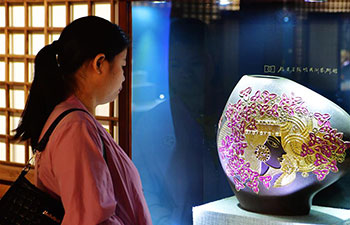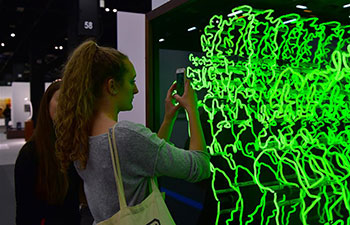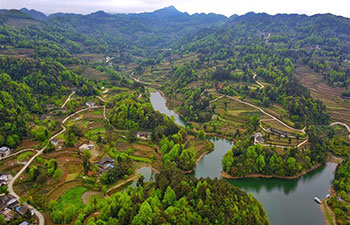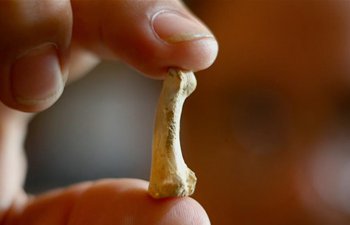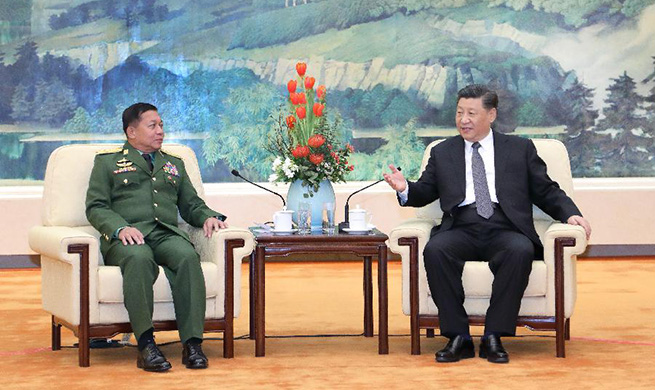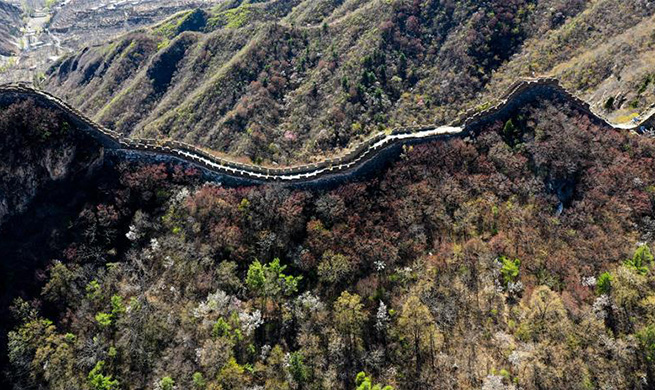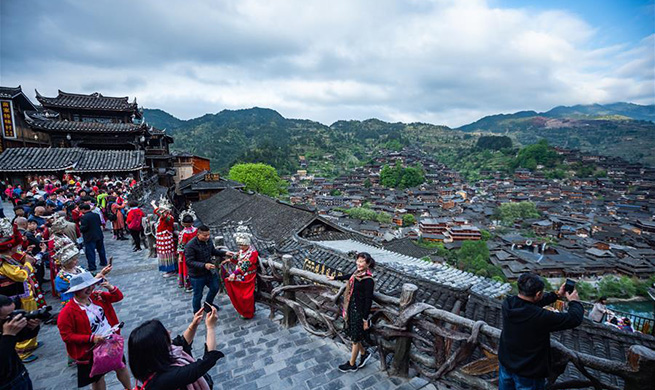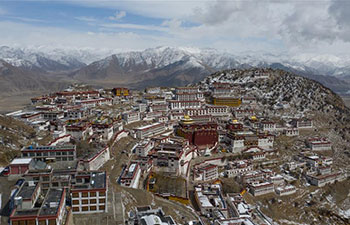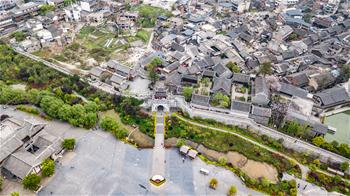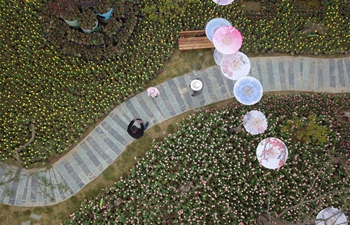SAN FRANCISCO, April 11 (Xinhua) -- Stanford University held a photo exhibition Thursday to honor Chinese immigrant workers who built the First U.S. Transcontinental Railroad in the 19th century and the 150th anniversary of the completion of the landmark U.S. infrastructure project.
The exhibition featured historical photographs, oral histories, lesson plans, artifacts, digital documents and other materials of a seven-year-long Stanford research program, the Chinese Railroad Workers in North America Project, which revealed for the first time many findings of the Chinese railroad workers whose contributions to one of the most ambitious American engineering projects had long been left forgotten in U.S. history.
The Stanford research project unveiled the untold history of thousands of Chinese migrants who toiled at a grueling pace to help construct, under perilous working conditions, the transcontinental railway between 1864 and 1869.
The railroad (originally known as the Pacific Railroad), which ran about 3,077 km from the U.S. east to west, was officially completed on May 10, 1869, connecting the existing eastern U.S. rail network at Omaha, Nebraska with the Pacific coast at the Oakland Long Wharf on San Francisco Bay.
Gordon Chang, co-director of the project and professor of history of the Center for East Asian Studies at Stanford, disclosed one of the details that broke the myth by some American skeptics about Chinese workers who hung off steep mountain cliffs in woven reed baskets to carve out holes for explosives.
Chang said the solid evidence of their extensive research from field trips and visits to families of the descendants of the Chinese immigrants showed that the Chinese railway workers endured incredible hardships during the construction process. They did use the baskets when they hung down from the side of mountains to put dynamite into black powder to blow up the rocks.
"They deposited tons and tons of rocks down into the American river 1,200 feet (about 366 meters) below. So baskets (were used). No myth," Chang told hundreds in attendance at his presentation about the disputed point in the past.
There were many more other discoveries from the massive Stanford research project, whose latest findings were published in two books -- The Chinese and the Iron Road: Building the Transcontinental Railroad, which was edited by Chang and Professor Shelley Fisher Fishkin of the Department of English at Stanford; and Chang's Ghosts of Gold Mountain: The Epic Story of the Chinese Who Built the Transcontinental Railroad.
Another purpose of the exhibition was to honor the Chinese immigrant workers who were treated unfairly and suffered prejudice even when they made huge contributions to the transcontinental railroad, Chang said.
At the peak time, about 25,000 Chinese laborers were working at the construction site of the railway, and their sweat and hard-work even played a role in the creation of Stanford University, Chang said, referring to Leland Stanford, the founder of one of the world's most renowned universities.
Stanford was an American tycoon, one of the Big Four businessmen who formed the Central Pacific Railroad company, and made a huge fortune from the construction of the transcontinental railway. He spent much of the wealth to create Stanford University in 1885.
"Without the Chinese migrants, the Transcontinental Railroad would not have been possible," Chang told Xinhua. "If it weren't for their work, Stanford University may not even exist."
Nancy Barrett, a retired healthcare worker, said she was attending the exhibition to learn more about hidden history of Chinese workers.
"I'm very glad to be here today and be part of the celebration of history coming out real history," she said.
"When you're thinking of the railroads, you think of the Chinese workers that built the railroad and nailed those final spikes and brought about the transcontinental transportation (in the United States). It was a phenomenal achievement," Barrett said.
Persis Drell, provost of Stanford University, called the exhibition "a really important and even a momentous occasion marking the culmination of project at Stanford."
"It's the story of hard-working individuals whose strength, skills and above all resilience in the face of danger, discrimination and hardship, paved the way in uniting our country from the Atlantic to the Pacific," Drell said.
